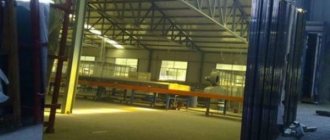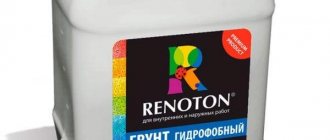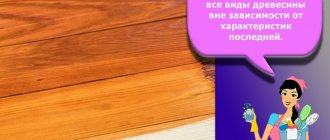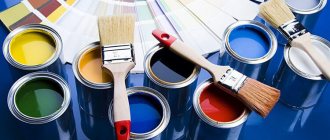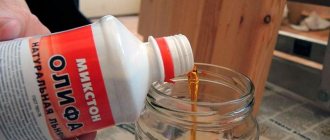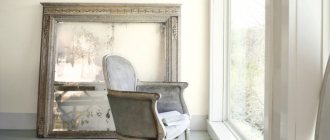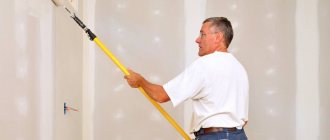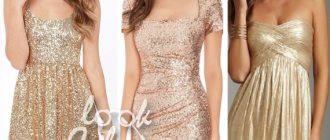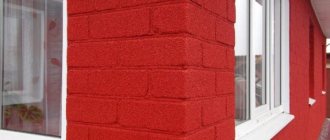UV-curing paints: properties and features
When using UV-curing paints, special lamps are used. With their help, it is possible to fix the applied substance. Some materials in this category are highly toxic. Therefore, they are prohibited from being applied to food packaging. However, after drying, such materials do not release solvents, as solvent compositions do.
However, it is important to consider that the use of lamps is accompanied by the synthesis of ozone. When the concentration in the air increases, this substance can become quite toxic.
Ultraviolet paints differ from simple compositions that contain solvents in their ability to dry quickly. Other features of this type of material include the following:
- rigid structure;
- resistance to moisture;
- sticky and viscous consistency;
- no rapid abrasion;
- drying only under the influence of ultraviolet light.
Composition and curing methods
Paints that harden under the influence of ultraviolet radiation contain the following components:
- Dye or pigment – gives the coating a specific shade.
- A special binding component in liquid form helps transform the material into a solid film. It hardens under the influence of ultraviolet radiation.
- Photoinitiator - takes part in the chemical reaction of solidification.
- Ultraviolet hardener is an oligomer. This group includes viscous components that acquire a solid consistency under the influence of ultraviolet radiation.
- Monomers are vegetable oils and solvents.
- Additional components and wax.
Essentially, UV-curing paint is a powder that contains curable polymers. As it warms up, the composition melts, forming a durable film on plastic, paper or wood.
A distinctive feature of this type of paint is that on a white surface they are fixed quite quickly, while on a dark surface the polymerization process occurs much more slowly.
The fact is that a light background repels ultraviolet radiation, and a black background absorbs it.
The final stage of applying ultraviolet dyes is drying. The dispersed medium during drying of dyes and varnishes is air. The formation of a film is due to the fact that the polymer solid fragments that are present in the material form a strong bond. They first melt and then acquire a hard texture. When using the material, it is first heated to +115 degrees. Thanks to this, it dries within a few minutes.
See also
Technical characteristics of the primer XC-010 and consumption per m2, how to apply
Scope of application
The unique characteristics of the material allow it to be used in various fields. Ultraviolet dyes are produced for different types of printing - digital, screen or offset. The properties of such materials help to implement non-standard design solutions.
Expert opinion
Zakharova Irina Yurievna
Cleaning professional with 15 years of experience. Our best expert.
Ask a Question
The scope of application of ultraviolet dyes is not limited to the production of printed products.
They are often used in furniture production and interior design. Such materials allow you to print on cardboard and paper. They can be applied to glass, metal, wood, and ceramic surfaces.
Quality and durability of the coating
This type of paint contains curable polymers. During drying, they form a film of high strength. Moreover, the quality characteristics of the coating do not depend on its thickness.
UV-curing paints have the following features:
- uniform application;
- no spreading.
The quality of the coating depends on the following factors:
- dye composition - it includes pigments, solvents, resin, synergetics, photoinitiator;
- surface type;
- conditions for applying the dye;
- radiation dose;
- the type of ultraviolet device used;
- distance between lamps and coating.
Kinds
The range of such products can be divided into two groups:
- luminescent;
- fluorescent.
Each has its own special properties that determine the specifics of their application, as well as a wide range of colors. These materials are based on insoluble and opaque alkyd or water-based pigments. During the day they are practically invisible on light surfaces, while on dark surfaces they appear as whitish marks.
We’ll dwell a little on pigments, since when painting any surface it would be good to know more information about them. For example, each coloring agent has such a characteristic as hiding power, i.e. how much material is required to paint a conventional amount of unit area.
If you take ultramarine pigment, you will need approximately 50 g/1 m2. By the way, not many people know from what mineral ultramarine paint is obtained: natural from lapis lazuli, but artificially - from a mixture of kaolin, Glauber's salt, soda, sulfur and coal.
Ultramarine blue pigment
Azure can be a stand-alone shade or used to enhance color. Now you know what ultramarine paint is made of - from what mineral it was first obtained, and you can always give the correct answer.
Fluorescent
- Invisible paint that glows in ultraviolet light, brightly acidic shades.
- Paint color range:
- lemon;
- yellow;
- blue;
- blue;
- red;
- brown;
- purple;
- mustard;
- purple;
as well as other colors.
- Invisible black acrylic paint does not glow in ultraviolet rays, but makes it possible to create 3D shadows in drawings.
Fluorescent paint in the interior
- Material used for design:
- residential premises;
- clubs;
- restaurants;
- and decoration of textiles and sports equipment;
- signal signs.
Advice: Zinga electrically conductive paint, which creates a thin, durable layer on the product, has proven itself to be a good protection for metal surfaces from corrosion.
Luminescent
This type of invisible paint can accumulate light energy, which it then gradually releases, glowing in the dark.
The duration and intensity of the glow depends on:
- pigments and their quality;
- intensity and time of light irradiation of the material;
- base layer colors;
- degree of illumination.
In normal light it has a pale greenish tint, but in the dark it begins to glow brightly with the corresponding color.
Luminescent paints can be used:
- yellow;
- blue;
- green;
- purple;
- orange;
- red.
Types of luminescent paints
Invisible luminescent paints can only glow in the following colors:
- blue-green;
- green-yellow;
- blue
The material has found its application in interior decoration; it is applied with your own hands to wallpaper, as well as other decorative coatings; it is used to decorate decorative elements, including lampshades, candlesticks and vases.
Advantages and Disadvantages of UV Curing
The UV curing method is considered environmentally friendly. Other advantages of this technology include the following:
- short drying time;
- economical consumption;
- possibility of application in parts - in this case it is permissible to paint a certain part of the surface;
- the possibility of reusing leftover paint or drained coating;
- high degree of strength and durability of the painted surface;
- the possibility of applying a thin layer to obtain a high-quality coating;
- low level of explosion hazard;
- harmless to the human body.
It is important to take into account that such materials and the technology that implies their use have certain disadvantages. Key disadvantages include the following:
- poor payback when used on automatic lines - this is only possible with large production volumes;
- high price - UV-curing dyes are more expensive than folic or solvent dyes;
- long drying period when painting non-flat surfaces;
- the need to slow down the curing process to obtain a high quality coating;
- the impossibility of eliminating defects on a painted surface - these include drops or streaks.
See also
What is marker paint for drawing on walls and application rules
Features and benefits of reflective paint
Reflective paint, or as it is also called, reflective paint, is a paint and varnish material widely used for marking pipelines and bridges, fencing and advertising structures, including parking lots and take-off areas, mines, signal markings of ferries and berths. The main condition for using reflective paint is the need to identify and highlight an object in the dark. The paint itself does not glow in the dark. When light rays hit a surface in the dark, they are reflected towards the source. The brightness of the surface glow depends on the angle at which the light beam hits and how bright it is itself.
Advantages of reflective paint:
- versatility, can be used on any surface;
- elasticity, simple dyeing procedure;
- reliable protection of the surface from water, frost, mechanical damage, and in some cases, from chemicals;
- safety, paint is not explosive;
- environmental friendliness, absence of dangerous diluents in the composition.
Features and benefits
A distinctive feature of this paint, and it is this that gives it reflective properties, is the presence of small glass beads in the composition. They are mixed with paint until a homogeneous mixture is obtained. The intensity of the glow does not depend on the proportion of balls in the paint. Glass beads are evenly distributed over the surface to be painted.
The paint is made on an acrylic base and is compatible with many types of primer coatings, including alkyd (GF/PF) and epoxy. The reflective properties of the paint are also affected by the activator, which removes the paint film from the surface of the glass beads so that the reflectance coefficient is maximum. Reflective paint can be of any desired color; to add color, tinting pigments are added to the composition. If the paint does not contain color, the color will be standard white.
Glass beads for reflective paint
Application process
The process of applying reflective paint varies and depends on the type of surface being coated. Before painting, the surface must be prepared. To prepare a metal surface, it is not at all necessary to use sandblasting; a cutter and a metal brush will suffice. Traces of rust and mill scale are removed from the surface. Then the surface is dust-free and degreased. Immediately after processing, paint application begins, since if this process is delayed, the metal surface will have time to oxidize.
When applying reflective paint, pay attention to the manufacturer's instructions. A layer of paint is applied to the previously primed surface. It is important that the primer is compatible with the components of the selected paint and varnish material.
Painting must be carried out at a temperature of at least +5 °C. Apply in 2-3 layers. The drying time of each layer depends on the air temperature, it can be either 3 or 6 hours. After complete drying, a thin layer of activator is applied, which removes the glass beads from under the paint film.
How to properly care for paint?
If the procedure for applying reflective paint was carried out according to all the rules, its service life should be 5-10 years. In order for the paint layer to serve its entire life without losing its reflective qualities, it needs to be treated with an activator approximately 1-2 times a year.
The article was prepared based on materials from https://www.vcyber.ru/paint.html
kraska.guru
Varieties and recommendations for selection
Print shops often use acrylic and water-soluble compounds. Polyester materials are also often used. Each variety has certain advantages and disadvantages.
Acrylic
This type of dye dries in a few minutes. They are characterized by a high level of reactivity. In addition, the paints have almost one hundred percent dry residue. Such substances include ultraviolet hardener. After applying this type of material, it is possible to obtain a durable and hard layer. Therefore, the scope of their application is quite wide.
Acrylic paints meet environmental requirements. During drying, they emit almost no fumes. However, if they come into contact with exposed areas of the body, the substances can be harmful. Therefore, it is recommended to use personal protective equipment when working. Another feature of such substances is their high level of viscosity. Therefore, materials cannot be applied by spraying.
The advantages of such paints include:
- high strength;
- safe composition;
- minimum amount of evaporation.
At the same time, the substances also have disadvantages:
- high price;
- harmful effects on the skin;
- high degree of viscosity.
Polyester
These materials are affordable. However, to dry them completely, airflow is required. Curing of dyes is carried out under the influence of many ultraviolet lamps. Such substances can be applied by spraying. At the same time, their layers may acquire a yellow tint under the influence of ultraviolet radiation.
The advantages of polyester dyes include:
- low price;
- possibility of application by spraying;
- good hiding power.
However, the materials differ in some disadvantages:
- the need to use airflow;
- instability;
- yellowing due to ultraviolet radiation.
Water soluble
These dyes are considered expensive, but have a safe composition. They do not acquire a yellow tint and are suitable for spraying. As the materials dry, they form durable pigment layers that are of high quality. These substances are completely harmless even if they come into contact with the skin.
The advantages of water-soluble paints include:
- safe composition;
- stability;
- Possibility of application by spraying.
At the same time, the substances also have a number of disadvantages:
- high price;
- the need for convective drying.
Characteristics and application of reflective paints
Reflective paint is a universal painting material with a wide range of applications. Another name for this material is reflective paint. This coating is used to create workwear, for road markings or to delimit territory. The peculiarity of the composition of reflective paint is the presence of a reflective pigment, which is combined with a standard transparent carrier. The usual proportion of components is 1:3. As a rule, varnish is used as a transparent carrier on any of the existing and most common bases: polyurethane, alkyd, acrylic and others.
What kind of varnish is used as a base does not affect the characteristics of the paint composition. But you should select a painting material based on the compatibility of the coating with the surface. That is, the varnish should adhere well to the surface to be painted. The main property of this material is the ability to produce a glow effect when exposed to light rays. The peculiarity of this effect is a bright glow exactly from the side from which the light beam directly falls. Reflective paint is often used to mark moving objects: cars, strollers, etc.
Types and uses of luminous paints
Fluorescent paint belongs to the category of reflective paints, but has its own characteristic features. This material is a combination of the same transparent base, only it is complemented by a fluorescent pigment. It is this additive that provides the glowing effect of the surface on which the paint is applied. The peculiarity of fluorescent paint is that it begins to glow under the influence of ultraviolet rays. In modern fluorescent coatings, acrylic varnish is most often used.
The combination of such components has proven to be an environmentally friendly balance. The pigment added to acrylic varnish can be of a variety of colors: blue or pink, orange or red, yellow or blue, white or green, as well as other bright shades. When exposed to ultraviolet rays, the brightest and most spectacular colors will be pink, green, red and yellow. Fluorescent paint is used as a decorative element in interior or exterior decoration. Club halls are often decorated with this material. Also, the paint composition is often used in car tuning.
Phosphorus is used as a base for making phosphor paint. This paint has found application in interior design, and is also widely used for painting vehicles. Since phosphorus is a dangerous substance, modern paint manufacturing technologies have found a safe substitute for it - phosphor. This substance is completely safe for human health and has the same characteristics as phosphorus. Phosphorus paint can be applied to any surface, that is, even wooden structures and rubber products can be painted.
To create a decorative glow in structures, this paint is applied to the concrete surface in patterns. For transport, painting with phosphorus makes it possible to achieve individuality in appearance. Patterned paint applied to car rims or part of the body helps give the car a unique appearance. Phosphor-based paint is widely used for construction purposes. In the design of an unrivaled interior or exterior, it is applied to concrete surfaces, paving stones, load-bearing brick structures and walls covered with ceramic tiles.
Paints made on the basis of phosphor are called luminous paints. This product has an individual feature - a glow effect. This feature can manifest itself within 10 hours from the start of placing the tinted product in the dark. Thanks to such individual qualities, the paint has found recognition in many productive areas. With its use, it is easy to create luminous images on concrete, wood, rubber, metal and other surfaces. This type of dyeing agent is also used in the production of clothing.
A glow-in-the-dark T-shirt with a shimmer of several shades looks quite original. The action of the paint is based on the ability of the phosphor to accumulate energy luminous flux. The accumulation of light energy, carried out throughout the day, gives off a soft glow in the dark. The possibility of natural recharging is one of the main advantages of luminous paint. The use of such paint has opened up new opportunities in such industries as advertising street decoration, manufacturing of souvenirs and toys (gift packaging), building design of premises and auto tuning.
Are such paints harmful to health?
The production of luminescent paints is a complex technological process. The glow of such products is caused by the formation of defects in the crystal structure of the substance. Such defects are formed by introducing activator impurities. The position in the crystal lattice clamps the atom of the activating agent, creating the basis for the manifestation of the main characteristics of the phosphor (light intensity, effective glow period). All of the listed properties are determined by the subtlety of the entire synthesis process (the order of mixing the reagents, the purity of the reagents, the stages of heat treatment, the application of protective layers to the manufactured phosphor).
These paints do not harm human health due to the fact that light radiation occurs in the visible spectral range, as well as due to the complete absence of radioactive activity and chemical inertness. One of the varieties of such paints are special luminous body paints, manufactured according to certain technological standards. This type of paint must be accompanied by special safety certificates.
promplace.ru
Rating of the best brands of UV paint
Today, a variety of brands are engaged in the production of such paints. Popular brands include:
- VAN SON (Netherlands);
- MEGAMI (Japan);
- Excure (Belgium).
See also
Types of fire-retardant paints and the best brands of fire-retardant compounds
What you need for painting
During printing, it is important to ensure optimal climatic conditions:
- temperature at +18-24 degrees;
- humidity – 50-60%.
Curing depends on the choice of UV emitter. They can have the following varieties:
- mercury lamps;
- LED, electrodeless, quartz devices;
- LED lamps;
- fluorescent, xenon devices.
When choosing a device, it is important to consider that the frequency of its emission must coincide with the frequency of absorption by the photoinitiator. This component is responsible for the required dose of ultraviolet rays and the ability of dyes to react.
For the purpose of polymerizing powder paints, it is permissible to use wide-spectrum lamps. But they have some disadvantages:
- toxicity;
- high energy consumption.
